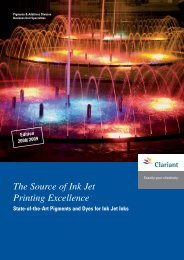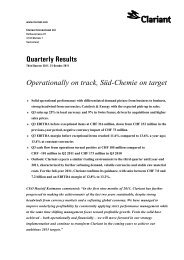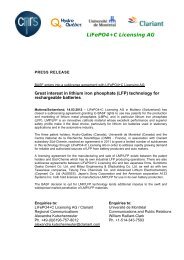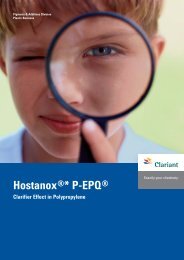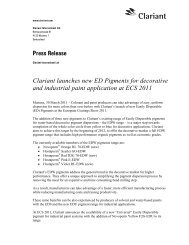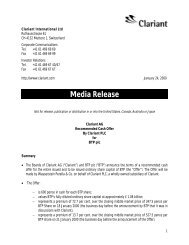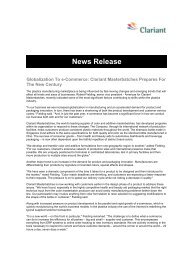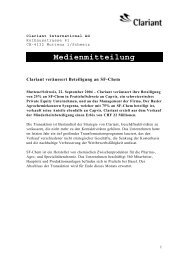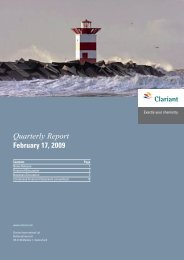Exolit
Exolit
Exolit
You also want an ePaper? Increase the reach of your titles
YUMPU automatically turns print PDFs into web optimized ePapers that Google loves.
Rigid PIR foam<br />
Advantages of <strong>Exolit</strong> AP:<br />
> Easily dispersable in polyols<br />
> Perfectly incorporated<br />
> No migration, no emissions<br />
> Only slight influence on<br />
mechanical foam properties<br />
> Reduced smoke values<br />
Products<br />
12<br />
Advantages of <strong>Exolit</strong> RP:<br />
> Highly efficient<br />
> Meets high requirements<br />
(e.g. DIN 4102 B1)<br />
<strong>Exolit</strong> AP 422 White powder D50 15 µm, standard product<br />
<strong>Exolit</strong> AP 462 White powder D50 20 µm, microencapsulated for moisture sensitive applications<br />
<strong>Exolit</strong> RP 6580 Red thixotropic dispersion of highly stabilized red phosphorus, carrier: TCPP<br />
Application area Classification Addition rate<br />
Construction DIN 4102 5-10 parts <strong>Exolit</strong> AP 422 /<br />
Class B2 100 parts polyol (blowing agent<br />
pentane, NCO index 250, combined<br />
with other non-halogenated liquid<br />
flame retardants)<br />
Class B1 15 parts <strong>Exolit</strong> RP 6580/100 parts<br />
polyol (blowing agent R 141b,<br />
high NCO index combined with<br />
additional TCPP)<br />
NF P 92-501 10-15 parts <strong>Exolit</strong> RP 6580/100 parts<br />
Class M1 polyol (blowing agent R 141b,<br />
high NCO index combined with<br />
additional TCPP)<br />
The addition rate to achieve a specific fire classification depends heavily on the polyol, blowing agent and foam density.





